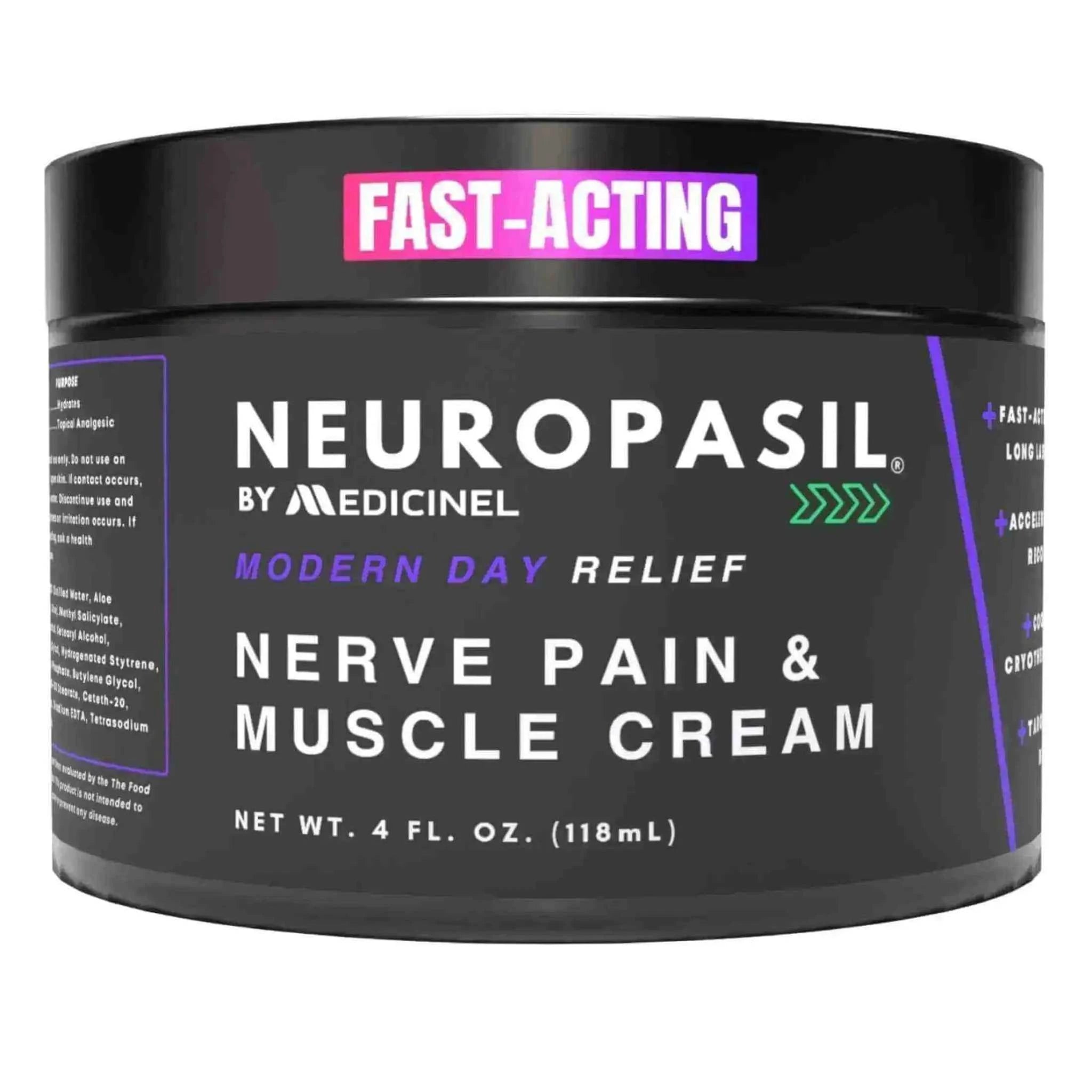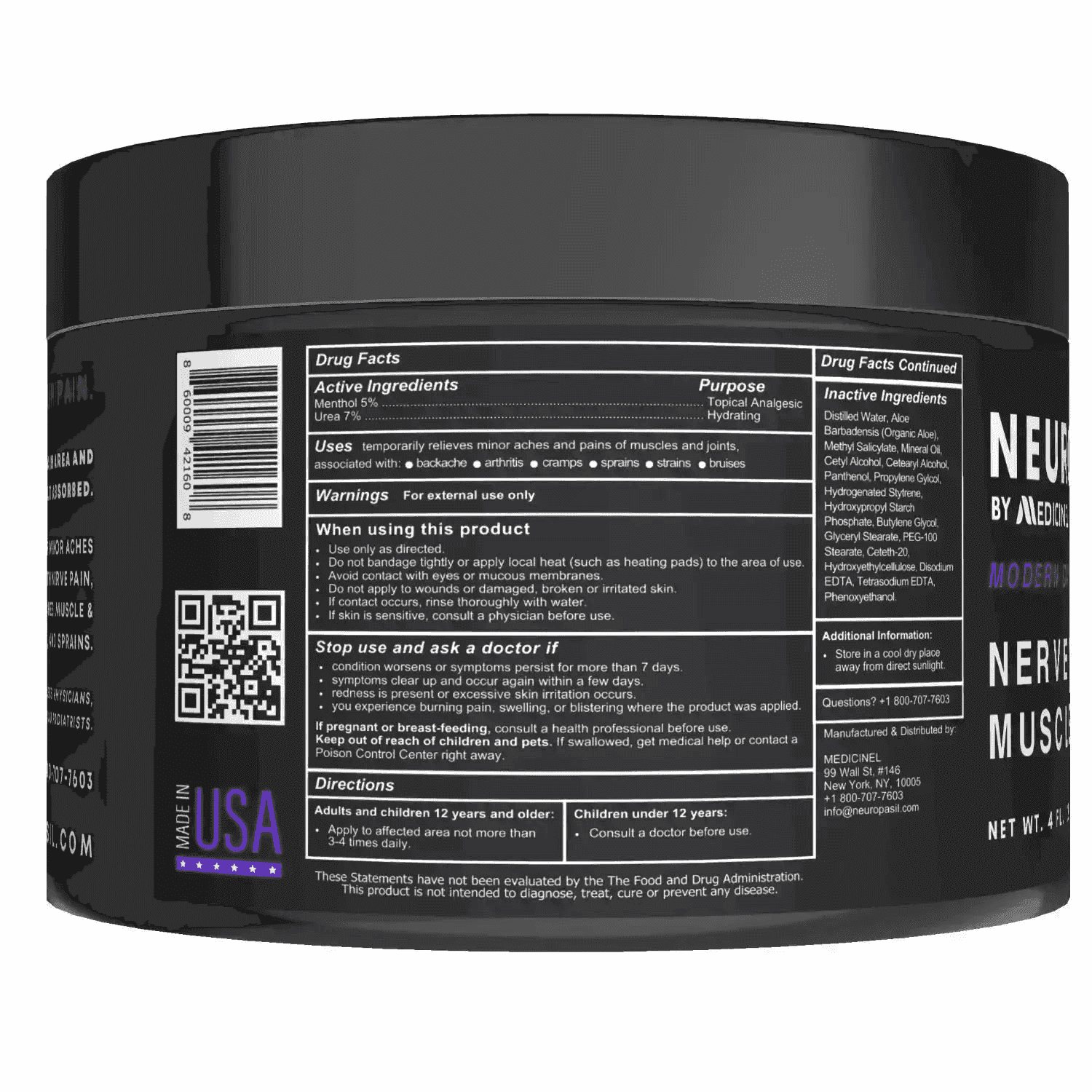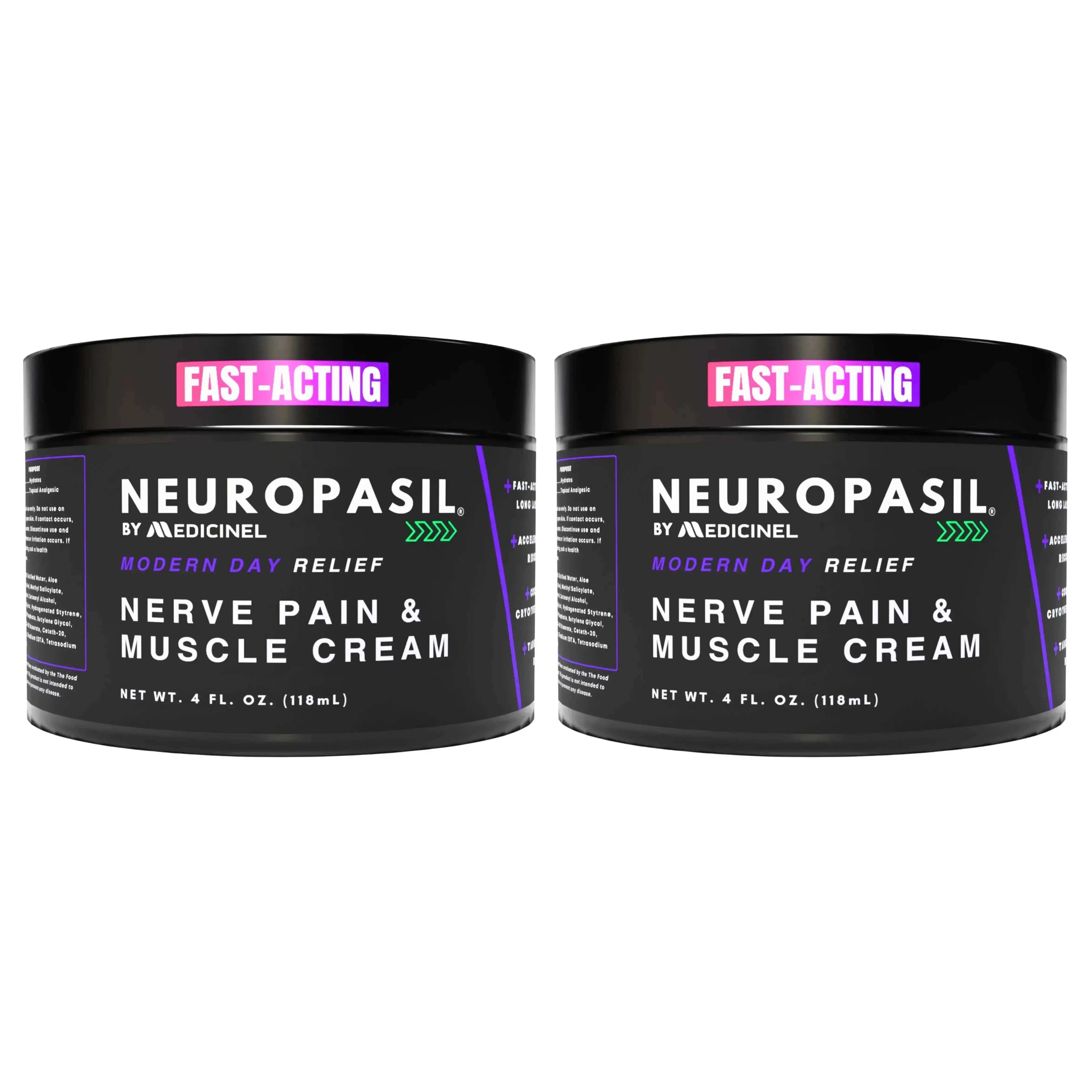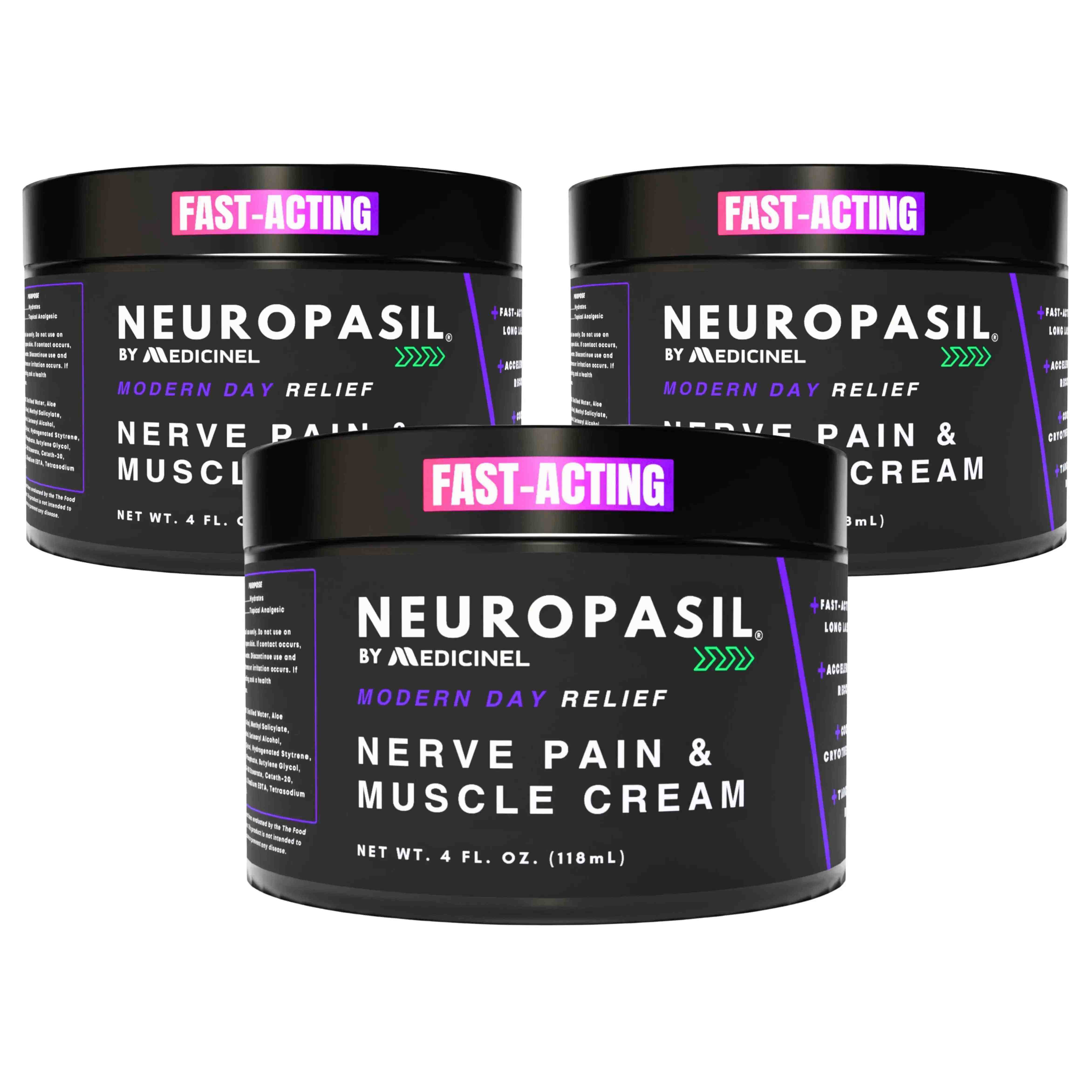Why After Workout Sore Muscles is Normal (And How to Handle It)
After workout sore muscles are normal and affect everyone from beginners to elite athletes. This soreness, known as Delayed Onset Muscle Soreness (DOMS), occurs when you stress your muscles in new ways or increase workout intensity.
Quick Relief for After Workout Soreness:
- Move gently - Light walking or stretching helps blood flow
- Use temperature therapy - Ice for inflammation, heat for tight muscles
- Stay hydrated - Drink plenty of water and eat protein
- Get quality sleep - Your muscles repair themselves during rest
- Try topical relief - Natural pain-relieving creams can help
DOMS occurs because exercise creates microscopic tears in your muscle fibers. This process is how your muscles get stronger; as the tears heal, they build back stronger than before.
Soreness typically starts 12-24 hours after your workout, peaks around day 2-3, and resolves within 3-5 days, though it can sometimes last a week.
The good news is you don't have to suffer. Simple, effective methods can speed up recovery, reduce discomfort, and get you back to your routine faster.
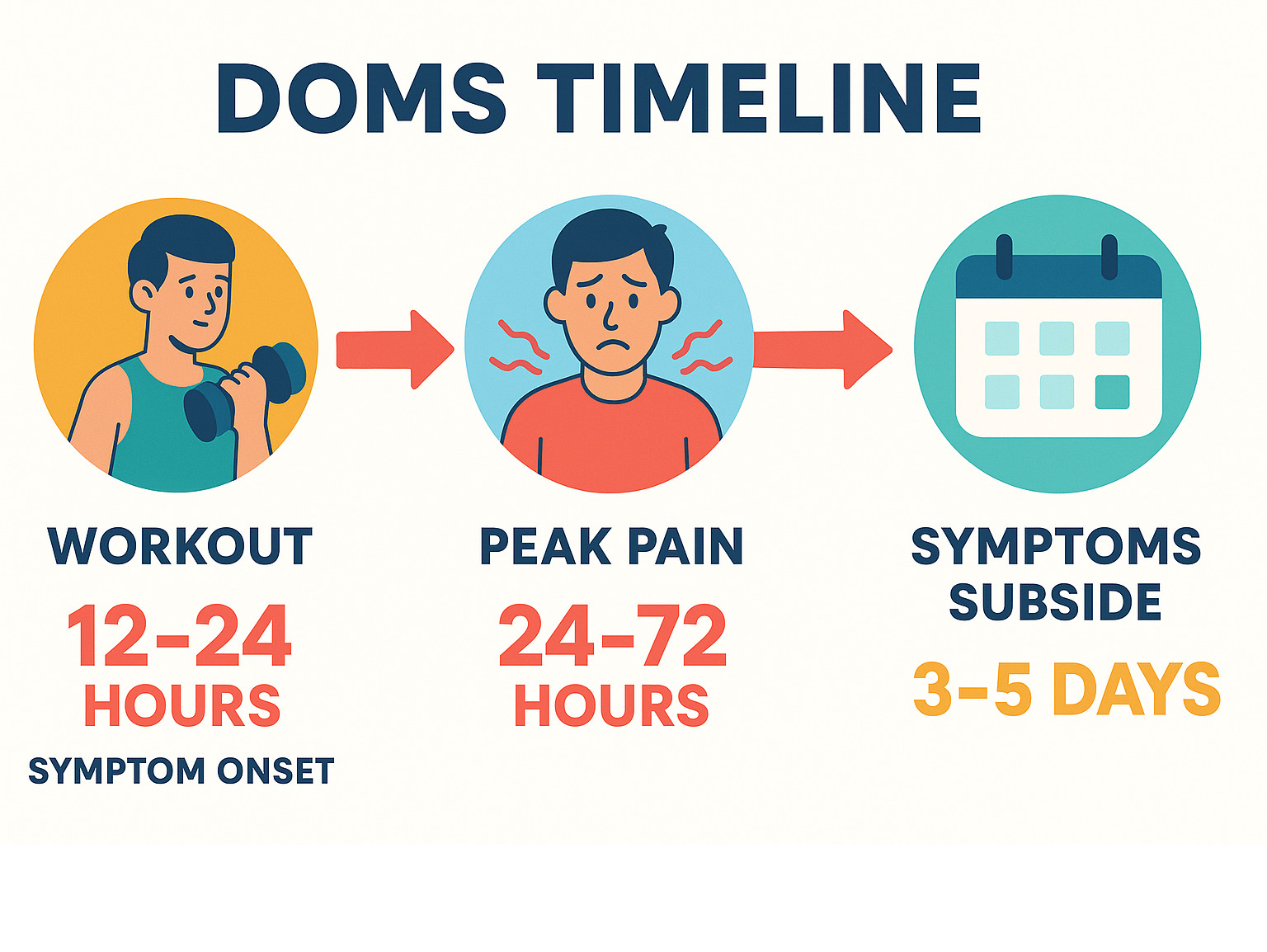
Understanding Post-Workout Soreness: What is DOMS?
You know that feeling the morning after a great workout when getting out of bed feels like a challenge? That's after workout sore muscles, officially known as Delayed Onset Muscle Soreness, or DOMS for short.
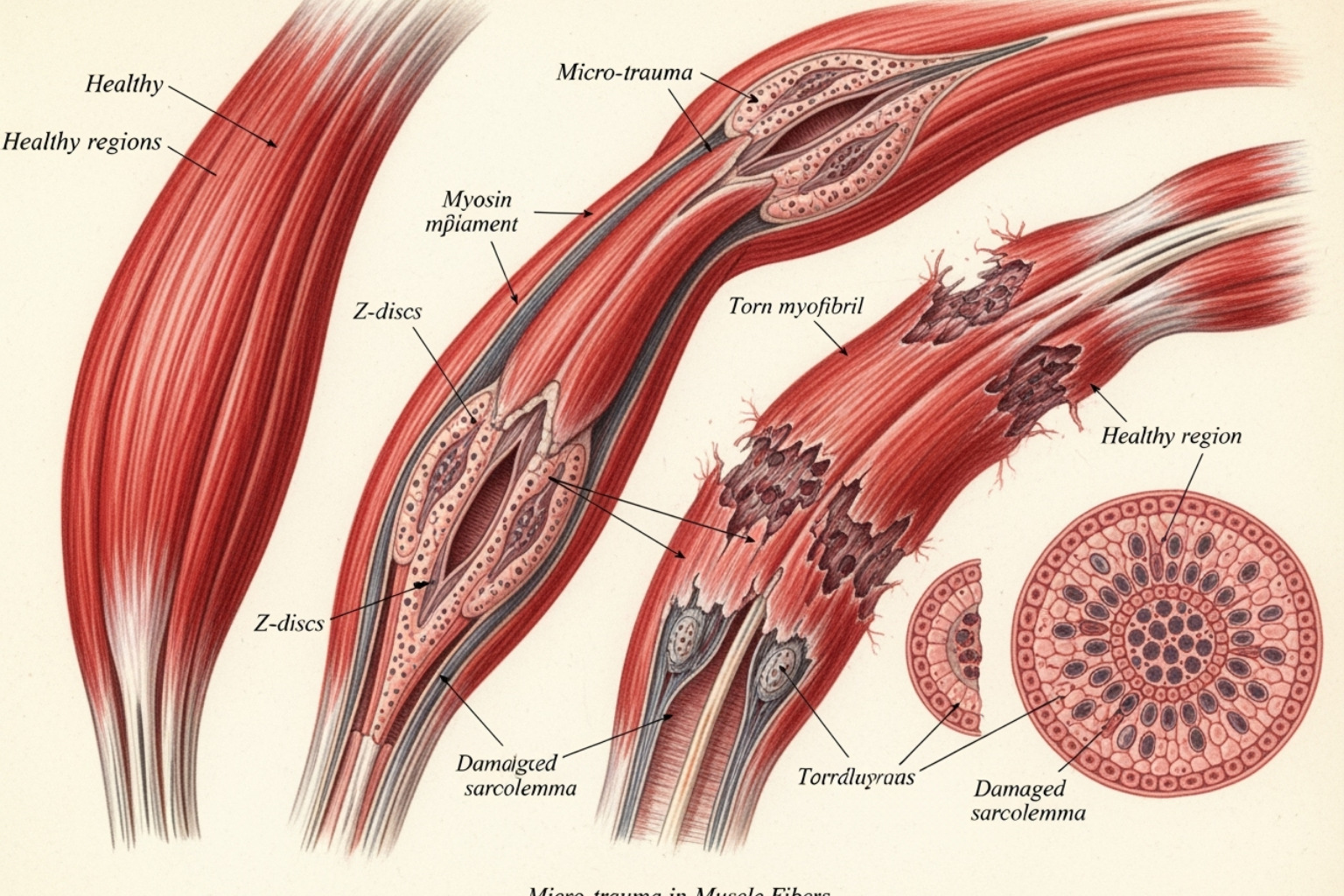
DOMS is your body's natural response to challenging exercise. When you push your muscles harder than they're used to, microscopic tears develop in the muscle fibers. This is a good thing—it's how your muscles get stronger.
The process works like this: during exercise, especially eccentric exercises (think the lowering part of a squat or the downward motion of a bicep curl), your muscles stretch while under tension. This creates more stress on the muscle fibers than other types of movement, leading to those microscopic tears.
Interestingly, DOMS isn't caused by lactic acid. The burn you feel during a workout is lactic acid, which your body clears quickly. The soreness that appears a day later is different. Microscopic tears cause DOMS, triggering an inflammation response as your body rushes to repair and rebuild the damaged tissue.
This repair process is what makes you stronger over time. Your muscles don't just heal back to where they were - they come back better prepared for similar stress in the future.
Common Symptoms of DOMS
How can you tell it's DOMS and not a more serious injury? The symptoms are distinctive and follow a predictable pattern.
Muscle tenderness is usually the first thing you'll notice - your muscles feel sore to the touch, almost like they're bruised. Stiffness comes next, making simple movements feel like you're the Tin Man from Wizard of Oz before he gets his oil can.
You might also experience a reduced range of motion. Suddenly, reaching for something on a high shelf or bending down to tie your shoes becomes a real challenge. Some people notice mild swelling in the affected muscles, along with general muscle fatigue that makes you feel weaker than usual.
The timeline is key here - symptoms start 12-24 hours post-workout, not immediately. Pain peaks 1-3 days later, which is why Tuesday can feel worse than Monday after a weekend warrior session. The good news? Most people feel completely back to normal within 3-5 days, though sometimes it can take up to a week for everything to settle down.
This delayed onset is what separates DOMS from an actual injury, which typically causes immediate pain. DOMS is your body's way of saying "we worked hard, and now we're getting stronger!"
Is It Just Soreness or an Injury?
Distinguishing between normal after workout sore muscles and an injury is crucial. Knowing the difference can prevent a minor issue from becoming a major problem and save you weeks of recovery time.
Your body provides clear signals. DOMS feels very different from an injury, and the distinction is obvious once you know what to look for.
DOMS feels like a dull, generalized ache that spreads across the entire muscle group you worked. It's the kind of soreness that makes you go "oof" when you sit down after leg day, but it's not sharp or stabbing. This soreness also has a delayed onset – it sneaks up on you 12-24 hours after your workout, not during or immediately after.
An injury, on the other hand, announces itself immediately. You'll feel sharp, localized pain right when it happens or within a few hours. Instead of affecting your entire quad, for example, an injury might feel like a specific "pull" or "knot" in one spot. This type of pain usually gets worse with movement, not better.
| Feature | Delayed Onset Muscle Soreness (DOMS) | Muscle Injury (Strain, Sprain, etc.) |
|---|---|---|
| Onset | Delayed (12-24 hours after exercise) | Immediate or within a few hours of the incident |
| Type of Pain | Dull, aching, generalized soreness across a muscle group | Sharp, sudden, localized pain |
| Location | Affects a broad area or entire muscle group that was worked | Specific to a small, localized spot (e.g., a "knot" or "pull") |
| Movement | Soreness often lessens with light movement (active recovery can help) | Pain worsens with movement; may prevent movement or weight-bearing |
| Accompanying Symptoms | Stiffness, tenderness, reduced range of motion, mild swelling, muscle fatigue | Swelling, bruising, redness, warmth, numbness, tingling, muscle spasms |
| Duration | Typically 2-5 days, up to a week | Can persist for weeks or months if not treated; doesn't improve with rest |
A helpful rule of thumb: DOMS often feels better with gentle movement, while an injury usually feels worse. If a light walk or gentle stretching helps your soreness, you're probably dealing with normal DOMS.
When to See a Doctor for Your After Workout Soreness
Usually, after workout sore muscles are just your body's way of saying "good job" and will resolve on their own. However, your body sometimes sends urgent signals that shouldn't be ignored.
You should definitely see a doctor if your pain lasts more than a week or seems to be getting worse instead of better. Normal DOMS follows a predictable pattern – it peaks around day 2-3 and then gradually improves. If you're still hurting just as much (or more) after 5-7 days, something else might be going on.
Severe swelling that doesn't go down is another red flag. A little puffiness is normal with DOMS, but if your muscle looks significantly swollen or feels hot to the touch, that's worth a medical evaluation.
Dark-colored urine is a medical emergency. This could be a sign of rhabdomyolysis, a serious condition where damaged muscle tissue releases proteins into your bloodstream that can damage your kidneys. Rhabdomyolysis is a serious condition that requires immediate medical attention.
Sharp, unbearable pain that prevents you from moving a limb normally, especially if it's accompanied by numbness, tingling, or a complete inability to bear weight, needs professional evaluation. This isn't the "good" kind of muscle soreness we're talking about.
Trust your instincts. If something feels seriously wrong – not just uncomfortable, but genuinely concerning – don't hesitate to reach out to a healthcare provider. It's always better to get reassurance that everything's fine than to let a real problem get worse.
5 Simple Steps to Relieve After Workout Soreness
Now that we know what causes after workout sore muscles and how to distinguish it from an injury, let's explore practical steps for relief and faster recovery. These strategies help muscles heal and adapt, getting you back to your best.
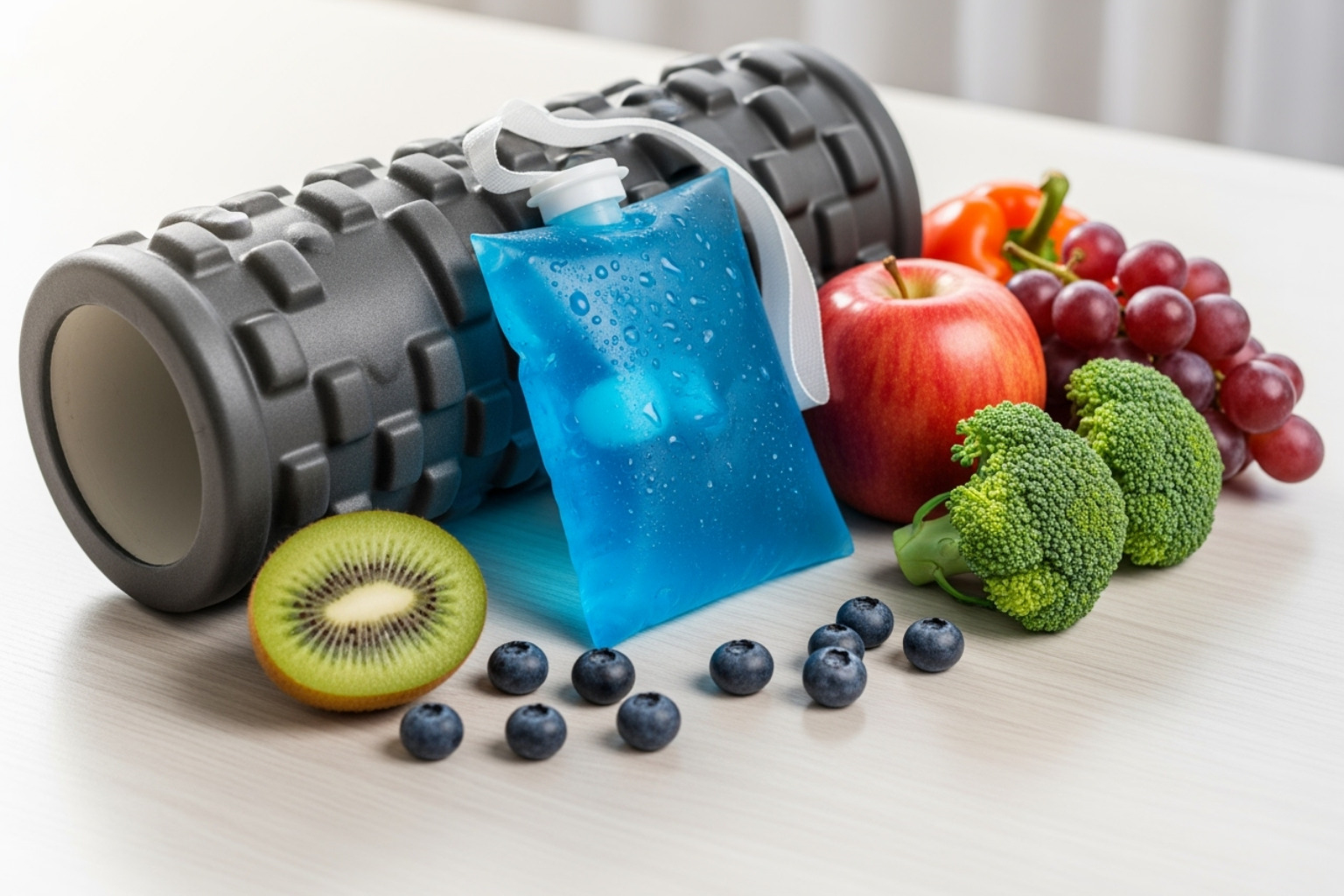
Step 1: Gentle Movement & Active Recovery
It sounds counterintuitive, but when your muscles are sore, complete rest isn't the answer. Gentle movement is key to getting blood flowing again.
Active recovery is your secret weapon here. We're not talking about jumping back into another intense workout. Instead, think gentle nudges that get your blood moving without adding more stress to already tender muscles.
A leisurely walk around the block works wonders. Your muscles get the circulation they need, and you might even find that dull ache starting to ease up. Swimming is another fantastic option - the water supports your body weight while giving you that gentle resistance. If you're more of a stay-at-home type, some gentle yoga or light stretching can work magic on stiff muscles.
Foam rolling deserves a special mention. Yes, it might feel intense at first, but that pressure helps release muscle tightness and gets blood flowing. Active recovery for relieving soreness is backed by science because it prevents stiffness and delivers fresh nutrients to your healing muscles.
The key is moving with your soreness, not fighting against it. Your muscles will thank you for the gentle encouragement.
Step 2: Apply Temperature Therapy (Hot & Cold)
Ice or heat? Both have a place in your after workout sore muscle toolkit.
Cold therapy is your go-to when muscles feel inflamed and tender. Think of ice as nature's anti-inflammatory. An ice pack for 15-20 minutes can work wonders by reducing swelling and numbing that achy feeling. Some brave souls swear by ice baths, and research suggests cold water may help with soreness by constricting blood vessels and reducing inflammation.
Once that initial acute soreness starts to fade, heat therapy becomes your best friend. A warm bath (especially with Epsom salts) can feel like a gentle hug for tired muscles. The magnesium in Epsom salts adds an extra layer of muscle relaxation.
Heat increases circulation and helps tight muscles loosen up. If you're feeling more stiff than inflamed, reach for that heating pad or hop in a hot shower. Some people even alternate between hot and cold to boost circulation.
Step 3: Prioritize Nutrition and Hydration
After a tough workout, your body is rebuilding muscle. Like any construction project, it needs the right materials and plenty of water.
Hydration is absolutely crucial. Dehydration can make after workout sore muscles feel even worse and last longer. Aim for about 8 ounces of water for every 15-30 minutes you exercised, plus your regular daily intake.
Protein provides the building blocks your muscles need. Amino acids are essential for repairing those tiny tears and making your muscles stronger. You don't need to chug protein shakes, but make sure you're getting quality protein throughout the day.
Certain foods also help fight the inflammation that's making you sore. Omega-3 fatty acids from salmon, walnuts, or flaxseeds are natural anti-inflammatories. Tart cherry juice has been studied extensively and shows real promise for reducing muscle soreness.
Don't forget about antioxidants. Colorful berries, leafy greens, and vibrant vegetables fight the oxidative stress that comes with exercise.
For more detailed insights, check out research on foods and supplements that may help DOMS. And if you want to dive deeper into the connection between nutrition and muscle health, explore more on relieving muscle aches through healthy living.
Step 4: Rest, Sleep, and Massage
Sometimes your body needs to pause and repair. This is where quality sleep—the deep, restorative kind—is essential.
During deep sleep, your body releases human growth hormone and kicks muscle protein synthesis into high gear. It's like having a night shift crew working on your muscles. Aim for 7-9 hours, especially after tough workout days.
Massage therapy is another game-changer for after workout sore muscles. Research shows that sports massage can reduce pain from DOMS significantly by increasing blood flow and reducing muscle tension.
If you can't book a professional massage, self-massage with your hands, a tennis ball, or foam roller can work wonders. Find tender spots and apply gentle, bearable pressure for about 30 seconds. Percussion guns have become popular and can deliver targeted vibrations that help break up muscle knots.
Even a few minutes of self-massage before bed can make a noticeable difference in how you feel the next morning.
Step 5: Consider Topical Relief and Supplements
When movement, nutrition, and rest aren't enough, targeted topical solutions and certain supplements can provide extra support for after workout sore muscles.
Topical analgesics work directly where you need them most. These creams and gels often contain menthol or camphor, which create cooling or warming sensations that help distract from pain. Arnica is another interesting option; studies suggest Arnica may help ease DOMS pain through its anti-inflammatory properties.
The beauty of topical solutions is they provide relief right where you apply them, without affecting your whole system.
When it comes to supplements, several have shown promise. Creatine isn't just for building strength; it may help reduce muscle damage markers. Curcumin, the active compound in turmeric, has powerful anti-inflammatory properties. Collagen supports connective tissue health, while magnesium helps with muscle function and relaxation.
Tart cherry juice deserves another mention as one of the most studied natural options for reducing exercise-induced muscle soreness.
Always chat with a healthcare professional before starting any new supplements. And if you're interested in exploring natural topical solutions, you might want to learn more about natural solutions for pain relief.
Everyone's body responds differently, so it might take some experimentation to find what works best for you.
Preventing Future Soreness: Smart Training Strategies
The best way to handle after workout sore muscles is to prevent them from becoming too intense. While some soreness is normal, a few smart strategies can make your fitness journey more comfortable.
Think of it this way: don't ask your body to do too much too soon. Progressive overload is key. This means gradually increasing the weight, reps, duration, or intensity of your exercises over time. Your muscles need a chance to adapt and get stronger before you throw bigger challenges at them.
Starting a new workout routine? Take it slow for the first few weeks. Your enthusiasm is wonderful, but your muscles will thank you for easing into things rather than going full throttle right away.

A proper warm-up is like giving your muscles a heads-up about what's coming. Dynamic stretching - think arm circles, leg swings, and gentle movements that take your joints through their full range of motion - gets your blood flowing and prepares your body for action. Just 5-10 minutes can make a huge difference in how you feel afterward.
Don't forget about the cool-down either! This is your chance to gradually bring your heart rate down and help your muscles transition back to rest mode. Light cardio followed by some gentle static stretching (holding those stretches for 20-30 seconds) can work wonders. Stretching improves flexibility and helps reduce that post-exercise stiffness we all know too well.
The key is finding activities you actually enjoy. When you love what you're doing, it's easier to stick with it long-term. Whether that's dancing, hiking, swimming, or lifting weights - find activities you enjoy, and your body will adapt much more gracefully.
Is it Safe to Exercise with After Workout Soreness?
This is a common and smart question. The answer isn't a simple yes or no—it depends on what your body is telling you.
Listen to your body - it's smarter than you might think. If you're dealing with mild soreness that feels more like a gentle reminder of yesterday's workout, you're probably fine to keep moving. In fact, some light activity can actually help! This is where active recovery shines. You might feel stiff when you first get up, but a gentle walk or some easy stretching often helps loosen things up.
Here's a practical approach: if your legs are feeling after workout sore from yesterday's squats, try focusing on your upper body instead. This lets your legs recover while keeping you active and maintaining your routine.
However, if you have moderate to severe soreness where your range of motion is limited, it's time to rest. Pushing through significant pain can lead to injury. Your muscles are signaling they need time to repair.
Avoid intense training on sore muscles. If the soreness is affecting your ability to perform exercises with proper form, or if it feels sharp rather than like a dull ache, take a rest day. Sometimes the best thing you can do for your long-term progress is to let your body catch up.
The goal is to avoid overtraining risk while still staying consistent with your fitness routine. It's a balance, but you'll get better at reading your body's signals over time. For more detailed strategies on managing this balance, check out our guide on reducing muscle soreness after a workout.
Taking a day or two to fully recover isn't giving up - it's being smart about your long-term health and fitness goals.
Frequently Asked Questions about Post-Workout Muscle Pain
We get many questions about muscle soreness. When you're dealing with that familiar ache, you want answers. Let's clear up common questions about after workout sore muscles.
How long does post-workout soreness typically last?
Here's the typical timeline: after workout sore muscles usually start making themselves known 12 to 24 hours after you finish exercising.
The discomfort tends to peak around 24 to 72 hours after your workout - this is usually when you're thinking "wow, I really overdid it yesterday." The good news? Most people find their soreness resolves completely within 3 to 5 days.
That said, sometimes DOMS can be a bit more stubborn and hang around for up to a week, especially if you tried something completely new or went particularly hard. Everyone's body is different, so your recovery timeline might not match your workout buddy's exactly.
Is "no pain, no gain" true for muscle soreness?
While this classic gym motto sounds motivational, the truth is more nuanced.
Soreness can indicate that you've effectively challenged your muscles and triggered the adaptation process that makes you stronger. But here's the key point: soreness isn't a requirement for an effective workout. You don't need to hobble around the next day to know you had a good training session.
As you get fitter and your body adapts to your routine, you'll likely experience less soreness - but that doesn't mean you're not making progress! Your muscles are simply getting better at handling the stress you're putting them through.
The real focus should be on progressive overload and consistency, not on chasing that achy feeling. A well-designed workout that gradually increases in challenge will deliver results whether you feel sore afterward or not.
Does lactic acid cause muscle soreness?
This is one of the biggest fitness myths: lactic acid does not cause muscle soreness.
Here's what actually happens: lactic acid causes the burning sensation you feel during exercise - like when you're halfway through that last set of squats and your muscles are screaming. But your body is incredibly efficient at clearing lactic acid from your muscles, usually within minutes to hours after you stop exercising.
DOMS is caused by microscopic tears and inflammation in your muscle fibers, particularly from those eccentric contractions we talked about earlier. So while lactic acid plays a role in that immediate workout burn, it's completely innocent when it comes to your after workout sore muscles that show up a day or two later.
It's a common mix-up, but now you know the real culprit behind your post-workout soreness!
Conclusion
We've covered a lot about after workout sore muscles, from understanding that microscopic tears make you stronger to learning strategies for faster recovery.
The bottom line: that familiar ache is a normal, positive sign of muscle adaptation. The great news is you don't have to suffer or let it derail your fitness goals.
Your recovery toolkit includes five key steps: gentle movement, temperature therapy, proper nutrition and hydration, quality rest and massage, and topical relief for extra comfort.
Prevention is your best friend. By gradually increasing workout intensity, warming up properly, and listening to your body's signals, you can minimize future soreness while still challenging yourself effectively.
At Neuropasil, we understand that muscle discomfort shouldn't derail your wellness journey. Our natural muscle relief creams are designed to complement your recovery routine, offering targeted relief when you need it most. Right now, we're offering a limited-time 25% discount and free shipping on orders over $29.99, plus additional savings through our subscription options.
Don't let after workout sore muscles be a roadblock. With these evidence-based strategies, you can recover smarter, train more effectively, and move forward with confidence.
Your body is incredibly resilient and adaptive - trust the process, be patient with yourself, and celebrate every step of progress along the way.











